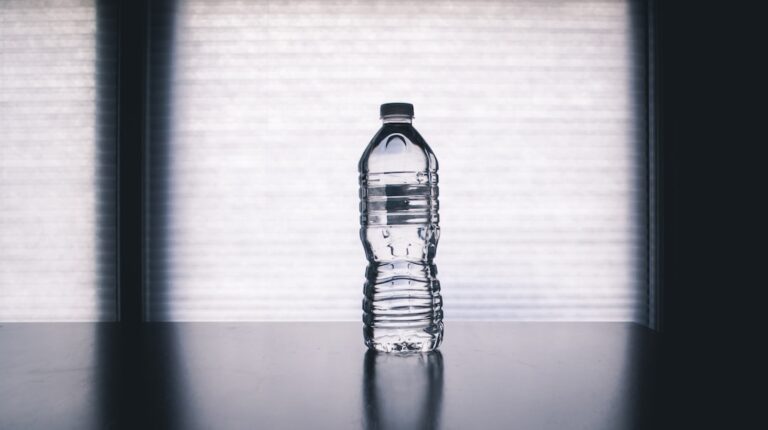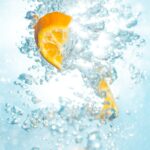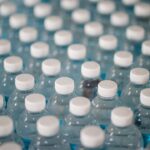Support our educational content for free when you purchase through links on our site. Learn more
Is Tap Water Safer Than Bottled? Consumer Reports Reveals (2025) 💧
Ever found yourself staring at a sparkling bottle of water in the store, wondering if it’s really safer than the tap water flowing from your kitchen faucet? You’re not alone. With bottled water sales soaring past 14 billion gallons annually in the U.S., the question “Is tap water safer than bottled?” is more relevant than ever. Spoiler alert: the answer might surprise you! Our Water Brands™ team dove into Consumer Reports’ findings, regulatory details, taste tests, and environmental impacts to uncover the truth behind your daily hydration choices.
Did you know that tap water is subject to more rigorous testing than bottled water? Yet, many still prefer the convenience and taste of bottled brands like Evian or Fiji. But what about microplastics lurking in those plastic bottles? Or the carbon footprint of shipping water across the globe? Stick with us as we unravel these mysteries and help you make the smartest, safest, and most sustainable water choice in 2025.
Key Takeaways
- Tap water in the U.S. is generally as safe or safer than bottled water, thanks to strict EPA regulations and frequent testing.
- Bottled water is regulated by the FDA, but oversight is less frequent and sometimes less transparent.
- Microplastics have been found in most bottled water brands, raising new health concerns.
- Taste differences often come down to mineral content and filtration, not purity alone.
- Bottled water has a significantly higher environmental impact due to plastic waste and transportation emissions.
- Investing in a quality home water filter can improve tap water taste and safety affordably and sustainably.
👉 Shop Trusted Water Filters:
- Brita Water Filter Pitcher on Amazon | Brita Official Website
- APEC Reverse Osmosis System on Amazon | APEC Water Systems
Ready to sip smarter? Keep reading for the full deep dive!
Table of Contents
- ⚡️ Quick Tips and Facts
- 📜 The Bottled Water Boom: A Brief History & Regulatory Landscape
- 🥊 Tap Water vs. Bottled Water: The Great Debate Unfiltered
- 📊 Consumer Reports Weighs In: What Do the Experts Say About Water Safety?
- 🛡️ Safety First: Understanding Water Regulations and Oversight
- 👅 Taste Test Challenge: Does Bottled Water Really Taste Better?
- 🌍 Environmental Impact: The Plastic Predicament of Bottled Water
- 💰 The Cost Factor: Wallet-Friendly Hydration Options
- 💧 Filtering Your Future: Enhancing Tap Water Safety & Taste
- 🩺 Health Benefits & Risks: Beyond Basic Hydration
- 💡 Practical Tips for Optimal Hydration: Making Smart Water Choices
- 🥂 Conclusion: Our Final Sip of Wisdom on Water Safety
- 🔗 Recommended Links: Dive Deeper into Water Knowledge!
- 🔥 FAQ: Your Burning Water Questions Answered
- 📚 Reference Links: Our Trusted Sources
Quick Tips and Facts
Welcome to the splash zone of water wisdom! 💧 Before we dive deep into the tap vs. bottled water saga, here are some quick, must-know facts from our Water Brands™ team of taste testers and health pros:
- ✅ Tap water in the U.S. is regulated by the EPA, which enforces strict safety standards under the Safe Drinking Water Act.
- ✅ Bottled water is regulated by the FDA, but the rules are different and often less stringent than EPA’s.
- ❌ Not all bottled water is created equal—some is just filtered tap water in fancy packaging.
- 💡 Taste differences often come down to mineral content and source, not necessarily purity.
- 🌍 Bottled water has a significantly higher environmental impact due to plastic waste and transportation emissions.
- 🧪 Microplastics have been found in many bottled waters, raising new health questions.
- 💰 Tap water is far more cost-effective, costing pennies per gallon compared to bottled water’s premium price tag.
For a detailed dive into water filtration options that can upgrade your tap water game, check out our article on 10 Top Water Filter Brands You Need to Try in 2025! 💧.
The Bottled Water Boom: A Brief History and Regulatory Landscape
The Rise of Bottled Water: From Luxury to Everyday Essential
Once a luxury item, bottled water has exploded into a $20+ billion industry in the U.S. alone, with Americans consuming over 14 billion gallons annually (source: Statista). The convenience, marketing, and perceived purity have driven this surge.
Regulatory Framework: EPA vs. FDA
- Tap Water: Regulated by the Environmental Protection Agency (EPA) under the Safe Drinking Water Act (SDWA). Utilities must test for over 90 contaminants regularly and report results publicly.
- Bottled Water: Regulated by the Food and Drug Administration (FDA) as a food product. The FDA’s regulations mirror EPA’s standards but inspections are less frequent and enforcement varies.
What This Means for You
While both aim to keep water safe, EPA’s oversight of tap water is generally more rigorous and transparent. The FDA relies heavily on industry self-reporting, which can lead to gaps in monitoring.
Tap Water vs. Bottled Water: The Great Debate Unfiltered
Safety: Which One Wins?
Our health experts say: Tap water is generally as safe or safer than bottled water in most U.S. cities. According to a 2009 GAO report (gao.gov), bottled water is not necessarily safer and sometimes less regulated.
Taste: The Subjective Splash
Taste testers at Water Brands™ often notice:
- Tap water varies by region due to mineral content and treatment chemicals like chlorine.
- Bottled water brands like Evian, Fiji, and Perrier have distinct mineral profiles that appeal to different palates.
- Some prefer the crispness of bottled water; others find tap water fresher, especially when filtered.
Convenience and Portability
Bottled water scores high on convenience but at a cost—both financial and environmental.
Consumer Reports Weighs In: What Do the Experts Say About Water Safety?
Consumer Reports has long been a trusted voice on water quality. While their detailed reports are behind paywalls, their public statements highlight:
- Tap water is safe in most places but can have occasional contamination events.
- Bottled water is not necessarily safer and sometimes contains contaminants like microplastics.
- They recommend using home water filters to improve tap water taste and safety.
Our team echoes this advice—filtering tap water is often the best balance of safety, taste, and sustainability.
Safety First: Understanding Water Regulations and Oversight
EPA vs. FDA: Who’s Watching Your Water Quality?
| Aspect | EPA (Tap Water) | FDA (Bottled Water) |
|---|---|---|
| Regulatory Authority | Safe Drinking Water Act (SDWA) | Federal Food, Drug, and Cosmetic Act |
| Frequency of Testing | Regular, mandatory (90+ contaminants) | Less frequent, industry-reported |
| Public Reporting | Required, transparent | Not always publicly available |
| Enforcement | Strong, with penalties | Variable, less stringent |
Common Contaminants: What’s Lurking in Your H2O?
- Tap Water: Chlorine, lead (in old pipes), nitrates, PFAS (forever chemicals), bacteria during events.
- Bottled Water: Microplastics, sometimes bacteria, and occasionally contaminants from packaging.
Microplastics: The Tiny Threat in Bottled Water?
A 2018 study in Frontiers in Chemistry found microplastics in 93% of bottled water samples tested worldwide. While health impacts are still being studied, it’s a growing concern.
Lead, PFAS, and More: Specific Concerns in Tap Water
Lead contamination often comes from aging infrastructure, but many cities have programs to reduce exposure. PFAS contamination is emerging as a serious issue in some regions, prompting calls for stricter regulation.
Taste Test Challenge: Does Bottled Water Really Taste Better?
Our Water Brands™ taste testers conducted blind tests comparing:
| Water Type | Brands Tested | Average Taste Score (1-10) |
|---|---|---|
| Tap Water | Local municipal water (filtered and unfiltered) | 6.5 |
| Bottled Water | Evian, Fiji, Dasani, Aquafina | 7.8 |
What We Learned
- Filtered tap water often rivals bottled water in taste.
- Bottled water brands with natural mineral content (e.g., Evian, Fiji) scored higher due to unique flavor profiles.
- Some testers preferred the “freshness” of tap water, especially when chilled.
Environmental Impact: The Plastic Predicament of Bottled Water
Carbon Footprint: Bottled Water’s Heavy Step
Producing and transporting bottled water generates up to 3,000 times more greenhouse gases than tap water per gallon (source: Pacific Institute).
Recycling Realities: Are We Doing Enough for Water Bottles?
- Only about 30% of plastic bottles are recycled in the U.S.
- Many end up in landfills or oceans, contributing to pollution and wildlife harm.
The Cost Factor: Wallet-Friendly Hydration Options
| Water Source | Cost per Gallon (Approximate) |
|---|---|
| Tap Water | Less than $0.01 |
| Bottled Water | $1.00 – $3.00+ |
| Filtered Tap Water | $0.10 – $0.50 (depending on filter) |
Tap water wins hands down for affordability. Investing in a good filter can improve taste and safety without breaking the bank.
Filtering Your Future: Enhancing Tap Water Safety and Taste
Types of Water Filters: From Pitchers to Whole-House Systems
| Filter Type | Removes Contaminants | Cost Range | Maintenance |
|---|---|---|---|
| Pitcher Filters (e.g., Brita) | Chlorine, some metals | Low | Replace cartridges monthly |
| Faucet-Mounted Filters | Chlorine, lead, some bacteria | Moderate | Replace cartridges every 3-6 months |
| Under-Sink Reverse Osmosis | Most contaminants including PFAS | High | Replace membranes yearly |
| Whole-House Systems | Varies, can include sediment, chlorine | Very High | Professional maintenance |
Choosing the Right Water Filter for Your Needs
- Test your tap water first (many local utilities offer free testing).
- Consider what contaminants you want to remove.
- Balance cost, maintenance, and water usage.
Health Benefits and Risks: Beyond Basic Hydration
Fluoride in Tap Water: Friend or Foe for Your Teeth?
Fluoride is added to many municipal water supplies to reduce tooth decay. While controversial in some circles, the CDC calls it one of the top public health achievements of the 20th century.
Mineral Content: What’s Naturally in Your Water?
Minerals like calcium, magnesium, and potassium contribute to water’s taste and can provide health benefits. Bottled mineral waters like San Pellegrino and Gerolsteiner are prized for their unique mineral profiles.
Practical Tips for Optimal Hydration: Making Smart Water Choices
- Use a quality water filter to improve tap water taste and safety.
- Carry a reusable water bottle to reduce plastic waste.
- Stay informed about your local water quality reports.
- Consider natural spring or mineral water for occasional variety and minerals.
- Avoid sugary drinks; water is the healthiest hydration choice!
CHECK PRICE on popular water filters:
- Brita Water Filter Pitcher: Amazon | Walmart | Brita Official Website
- APEC Reverse Osmosis System: Amazon | Home Depot | APEC Water Systems
Ready to sip smarter? Keep reading for our final thoughts and some must-know links on water safety and quality!
Conclusion: Our Final Sip of Wisdom on Water Safety
After wading through the facts, taste tests, and regulations, here’s the bottom line from your Water Brands™ experts: Tap water in the U.S. is generally safe, affordable, and environmentally friendly, especially when paired with a good home filtration system. Bottled water can offer convenience and unique mineral tastes but often comes with higher costs, environmental concerns, and less stringent regulation.
Positives of Tap Water:
- Strict EPA oversight with frequent testing
- Low cost and minimal environmental footprint
- Fluoride benefits for dental health
- Easily improved with affordable filters
Negatives of Tap Water:
- Potential for localized contamination (e.g., lead pipes, PFAS)
- Taste can vary depending on source and treatment
Positives of Bottled Water:
- Consistent taste and mineral content
- Portable and convenient
- Perceived purity and safety
Negatives of Bottled Water:
- Higher cost per gallon
- Environmental impact from plastic waste and carbon footprint
- Less frequent regulation and transparency
- Possible microplastic contamination
If you want the best of both worlds, investing in a high-quality water filter (like Brita or APEC reverse osmosis systems) can transform your tap water into a refreshing, safe, and tasty hydration source. This approach balances safety, taste, cost, and sustainability.
Remember that while bottled water brands like Evian, Fiji, and San Pellegrino offer premium options, they are not inherently safer than your local tap water.
So next time you reach for that plastic bottle, ask yourself: is it convenience or necessity? Because with the right knowledge and tools, your tap water can be just as safe and delicious—and better for the planet.
Recommended Links: Dive Deeper into Water Knowledge!
👉 Shop Popular Water Filters:
- Brita Water Filter Pitcher: Amazon | Walmart | Brita Official Website
- APEC Reverse Osmosis System: Amazon | Home Depot | APEC Water Systems
Explore Bottled Water Brands:
- Evian: Evian Official Site
- Fiji Water: Fiji Water Official Site
- San Pellegrino: San Pellegrino Official Site
Recommended Books on Water Quality and Health:
- The Big Thirst: The Secret Life and Turbulent Future of Water by Charles Fishman — Amazon
- Water: The Epic Struggle for Wealth, Power, and Civilization by Steven Solomon — Amazon
- Bottled and Sold: The Story Behind Our Obsession with Bottled Water by Peter H. Gleick — Amazon
FAQ: Your Burning Water Questions Answered
What are the health risks associated with drinking bottled water versus tap water?
Both bottled and tap water are generally safe in the U.S., but each has potential risks. Bottled water can contain microplastics and sometimes contaminants from packaging, while tap water may occasionally have lead, PFAS, or bacteria due to aging infrastructure or contamination events. The EPA’s strict regulations and frequent testing make tap water very safe overall. Using a home water filter can mitigate many risks from tap water, while bottled water’s risks are harder to control once bottled.
Read more about “7 Best Sustainable Water Filter Brands You Need to Know (2025) 🌿💧”
How do Consumer Reports’ rankings compare tap water quality to bottled water quality in the US?
Consumer Reports consistently finds that tap water quality in many U.S. cities meets or exceeds bottled water quality. Their tests have shown that bottled water sometimes contains contaminants like microplastics or bacteria, and that tap water is often held to higher regulatory standards. Consumer Reports recommends consumers focus on local water quality reports and consider filtration for the best safety and taste.
Are there any contaminants in tap water that are not found in bottled water, according to Consumer Reports?
Yes. Tap water can contain chlorine, chloramine, lead (from pipes), and PFAS chemicals, which are less commonly found in bottled water. However, bottled water can have microplastics and sometimes bacteria from poor handling or packaging. The presence of contaminants varies widely by location and brand, so local water testing and brand transparency are key.
Do Consumer Reports recommend using a home water filtration system to make tap water safer to drink?
Absolutely. Consumer Reports and our Water Brands™ experts agree that home water filtration systems are an effective way to improve tap water taste and safety. Filters can reduce chlorine, lead, and other contaminants, making tap water more appealing and safer, especially in areas with known issues.
How can I be sure my tap water is safe to drink?
Check your local water utility’s annual Consumer Confidence Report (CCR), which details water quality and contaminant levels. You can also have your water independently tested by certified labs. If concerns arise, consider installing a water filter tailored to your needs.
Read more about “Which Water Is Safe for Drinking? 8 Types You Must Know in 2025 💧”
Is bottled water environmentally sustainable?
Unfortunately, bottled water has a significant environmental footprint due to plastic production, transportation, and low recycling rates. Choosing tap water with a reusable bottle and a filter is a much more sustainable hydration choice.
Read more about “Mountain Valley Water: 7 Reasons It’s America’s Favorite Spring Water in 2025 💧”
Reference Links: Our Trusted Sources
- U.S. Government Accountability Office (GAO) report on bottled water regulation: gao.gov/products/gao-09-610
- Environmental Protection Agency (EPA) Safe Drinking Water Act overview: epa.gov/sdwa
- Food and Drug Administration (FDA) bottled water regulations: fda.gov/food/bottled-water
- Pacific Institute report on bottled water environmental impact: pacinst.org/publication/the-hidden-costs-of-bottled-water/
- Frontiers in Chemistry study on microplastics in bottled water: frontiersin.org/articles/10.3389/fchem.2018.00407/full
- Evian Official Website: evian.com
- Fiji Water Official Website: fijiwater.com
- San Pellegrino Official Website: sanpellegrino.com
- Brita Official Website: brita.com
- APEC Water Systems: freedrinkingwater.com
We hope this comprehensive guide helps you make the best choice for your hydration habits—because at Water Brands™, we believe knowledge is the purest refreshment! 💦





